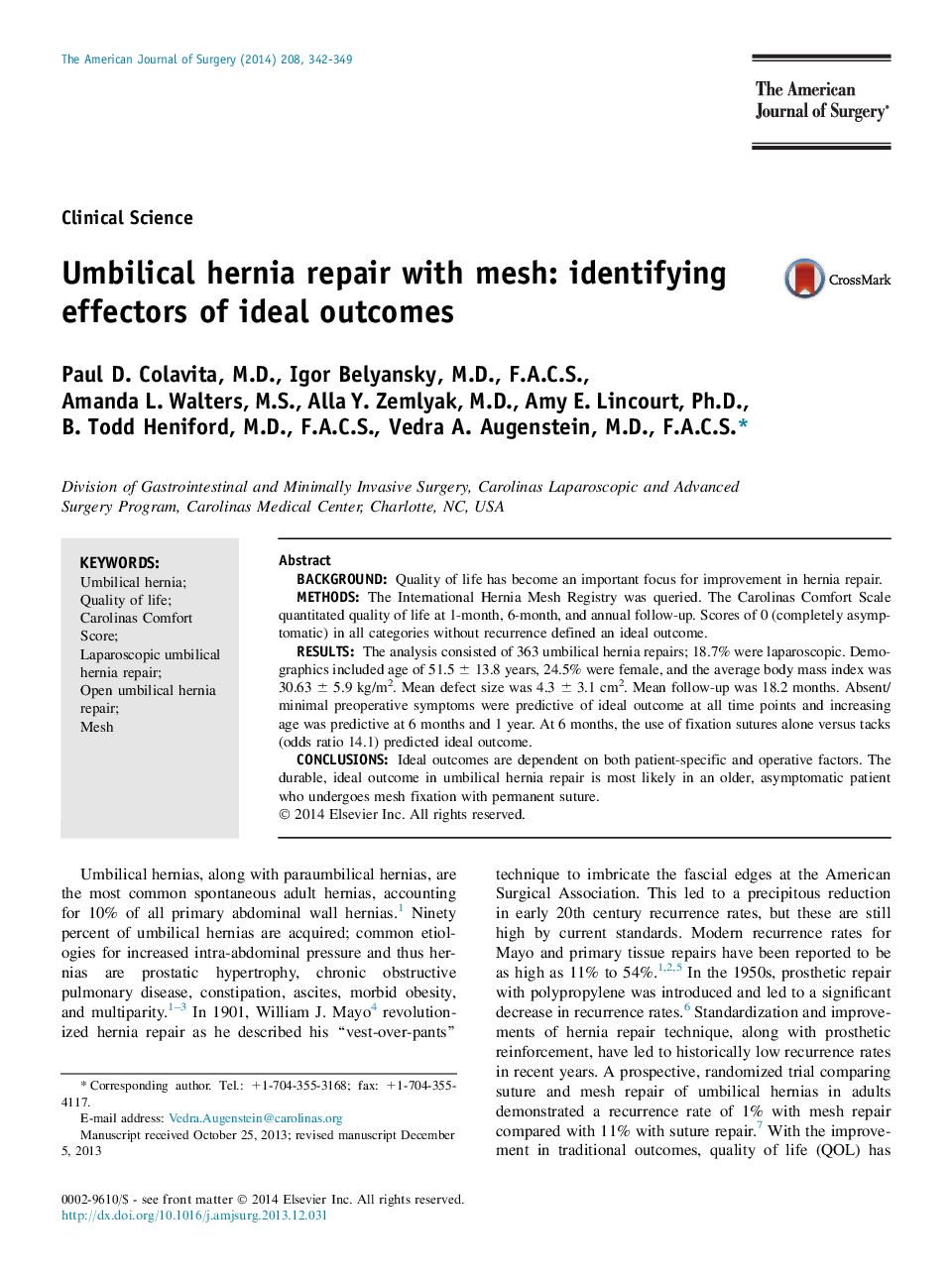| Article ID | Journal | Published Year | Pages | File Type |
|---|---|---|---|---|
| 4278498 | The American Journal of Surgery | 2014 | 8 Pages |
BackgroundQuality of life has become an important focus for improvement in hernia repair.MethodsThe International Hernia Mesh Registry was queried. The Carolinas Comfort Scale quantitated quality of life at 1-month, 6-month, and annual follow-up. Scores of 0 (completely asymptomatic) in all categories without recurrence defined an ideal outcome.ResultsThe analysis consisted of 363 umbilical hernia repairs; 18.7% were laparoscopic. Demographics included age of 51.5 ± 13.8 years, 24.5% were female, and the average body mass index was 30.63 ± 5.9 kg/m2. Mean defect size was 4.3 ± 3.1 cm2. Mean follow-up was 18.2 months. Absent/minimal preoperative symptoms were predictive of ideal outcome at all time points and increasing age was predictive at 6 months and 1 year. At 6 months, the use of fixation sutures alone versus tacks (odds ratio 14.1) predicted ideal outcome.ConclusionsIdeal outcomes are dependent on both patient-specific and operative factors. The durable, ideal outcome in umbilical hernia repair is most likely in an older, asymptomatic patient who undergoes mesh fixation with permanent suture.
